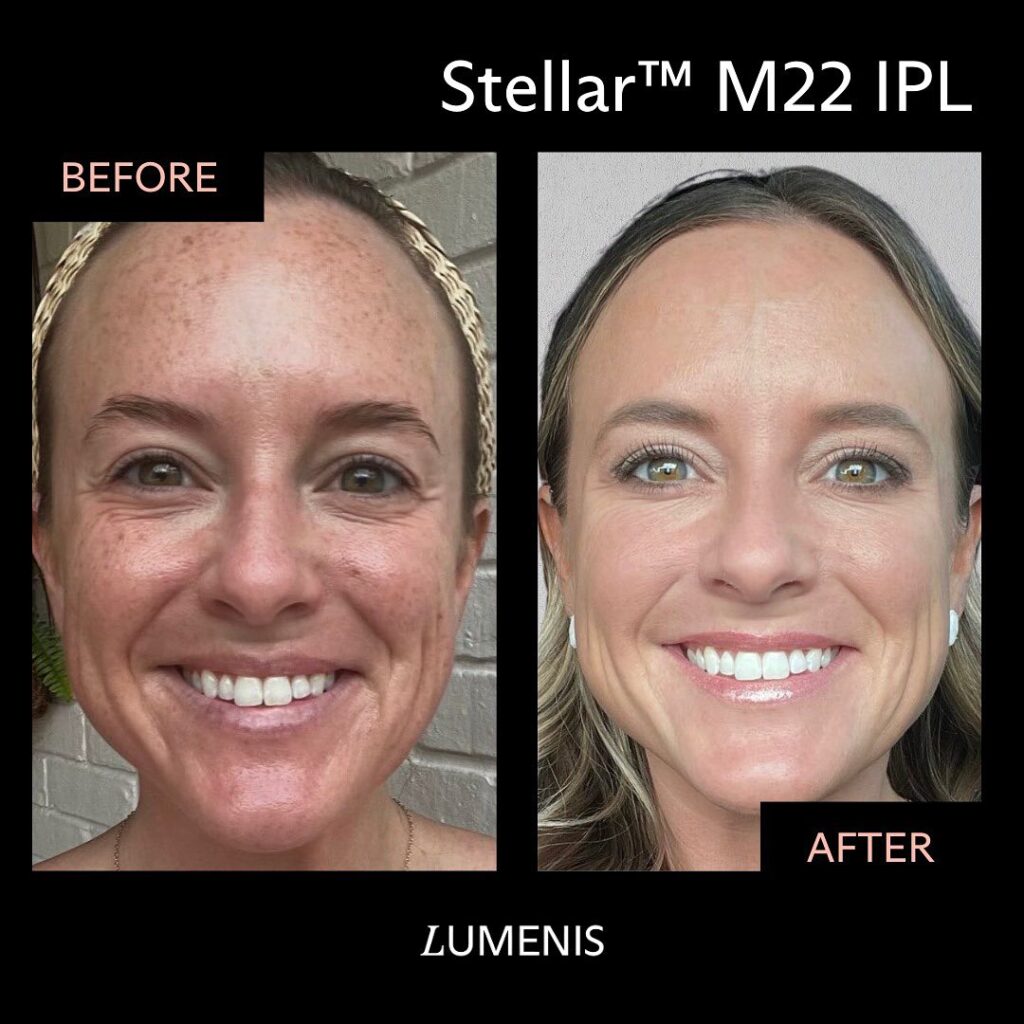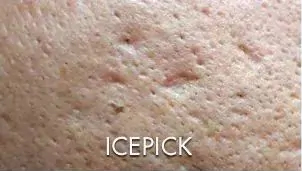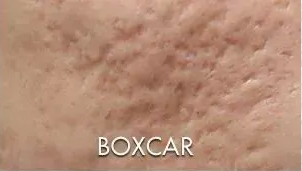ACNE
Blackhead/Whitehead
Blackheads and whiteheads occur when the pores become clogged with excess sebum, a natural oil produced by the sebaceous glands in the skin. This buildup of sebum creates a plug, either visible on the surface of the skin (blackhead) or hidden beneath the surface (whitehead).

Causes
Whiteheads:
Whiteheads are visibly small sebum plugs that appear as white or yellow bumps on the skin’s surface. Unlike blackheads, whiteheads have little to no opening at the top. They often present as tiny bumps on the skin that can be easily popped out.
Distinguishing whiteheads from pustular acne:
It’s important to differentiate between whiteheads and pustular acne. While they may both appear as white bumps, the contents differ. Whiteheads contain sebum plugs, whereas pustular acne consists of pus accumulated beneath the skin’s surface. Pustular acne occurs when pus accumulates and bulges outward, creating a whitehead-like appearance. Therefore, whiteheads should not be confused with pustular acne.
Blackheads:
Blackheads are characterized by open pores with black or brown sebum plugs exposed to air. They often feel rough and hardened to the touch. Skin with blackheads typically appears greasy.
Common types of blackheads include:
- Real blackheads
This type of blackhead is relatively large and feels a little bumpy when touch. You can pop it and sebum plug will squeeze out.
- Vellus hair-type blackheads
The Vellus hair-type blackhead is a rarely seen blackhead, only less than 5% of the population, often appearing around the nose or in the area in front of the ears. They feel prickly and have small black hairs growing inside. Hair removal or photorejuvenation therapies are recommended for this problem.
- Sebum filament-type blackheads
The type of blackhead has a black, smooth surface. The follicles have accumulated a large amount of sebum, leading to enlarged pore size. It is difficult to pop the blackheads, but if it is popped, small, filament-like sebum will be squeezed out.
Pimples
Pimples are a common symptom of acne, a skin condition characterized by the overproduction of sebum, clogged pores, bacterial growth, and inflammation. They can manifest in various forms such as papules, pustules, cysts, nodules, and comedones. Typically associated with changes in the skin’s appearance like redness, bumps, pus, or blood, pimples are often a visible sign of acne. Among the different types of acne, adolescent acne, which occurs during puberty due to hormonal fluctuations, is the most well-known.
Causes
Additional factors contributing to acne breakouts include:
- Hormonal fluctuations: Increased levels of male sex hormones, particularly during puberty, stimulate sebum production and contribute to acne development. Women may also experience hormonal changes during their menstrual cycle, leading to temporary breakouts.
- Dietary and environmental factors: Certain foods, such as peanuts and chocolate, as well as environmental conditions like hot weather and sun exposure, can exacerbate acne. Constipation and poor digestion may also contribute to skin issues.
- Fatigue and stress: Overwork, lack of sleep, and emotional stress can disrupt hormonal balance and contribute to acne flare-ups.
- Chemical irritants and makeup residue: Exposure to certain chemicals found in cosmetics, industrial oils, and medications, as well as the buildup of makeup residue on the skin, can irritate the skin and trigger pimples.
Types of Pimples:
- Comedones:
– Closed Comedone (Whitehead): A follicle with a closed opening, trapping sebum and keratin inside.
– Open Comedone (Blackhead): A follicle with an open opening, containing sebaceous filament that can be squeezed out. - Papules: Inflammatory pimples that become red and swollen.
- Pustules: Infected pimples filled with pus.
- Cysts: Deep, infected pimples containing pus and blood, potentially leading to scarring.
- Nodules: Large, hard pimples beneath or above the skin’s surface, often causing pain and scarring.
- Atrophic Pimples: Indented scars formed by damaged glands from papules or cysts.
- Aggregate Pimples: Groups of pimples appearing in various colors, including red, green, and purple.
- Microcomedone: The earliest stage of pimple formation, characterized by abnormal keratin formation and substance buildup in the pore.
Pimple Progression:
- Microcomedone develops into Comedone.
- Comedone can be Open (Blackhead) or Closed (Whitehead).
- Closed Comedone may progress to Inflammatory Pustules when infected.
- In severe cases, Pustules may lead to Papules, Nodules, or Cysts, potentially causing scarring.

Acne Marks
For those with acne-prone skin, the fight against breakouts can feel never-ending. Even after successfully treating acne, dealing with the scars it leaves behind becomes the next challenge. This ongoing cycle of concern and frustration can wear people down and diminish their confidence. Are aesthetic treatments the answer for achieving lasting results?
What is acne mark?
Acne marks are residual pigmentation changes left behind after a pimple resolves. They can appear as either red (post-inflammatory erythema) or black/brown (post-inflammatory hyperpigmentation) spots on the skin.
Symptoms
- Red acne marks
Red acne marks, also called post-inflammatory acne marks, initially appear red due to the dilation of blood capillaries at the site.
When a pimple becomes infected, nearby blood capillaries are irritated by the surrounding enlarged sebaceous gland. This irritation causes them to dilate, increasing blood flow for healing. After the pimple heals, blood flow slows, but the capillaries remain dilated, leading to the accumulation of red blood cells and platelets, resulting in the formation of red acne marks. - Black/brown acne mark (post-inflammatory hyperpigmentation)
After recovering from an acne outbreak, inadequate sun protection can exacerbate skin damage. UV radiation prompts melanin production, leading to the development of black acne marks (post-inflammatory hyperpigmentation) from red ones. Skin barrier damage or irritation triggers inflammation, irrespective of inflammation severity, potentially causing hyperpigmentation.
Initially, the black acne mark was a red acne mark. Inflammation triggers redness due to blood capillary dilation. Prolonged inflammation prompts melanin production, leading to black/brown pigmentation for skin protection.
Causes
Post-inflammatory hyperpigmentation isn’t confined to post-pimple healing. Excessive melanin production is a common cause of this type of pigmentation.
- Exposure to the sun
Prolonged sun exposure prompts skin inflammation, leading to the production of inflammatory mediators. Among their effects is the activation of melanocytes, which in turn triggers melanin secretion. - Skin damage
Popping a pimple damages the skin and prompts an inflammatory response, activating melanocytes which produce melanin. Skin damage may hinder pigment regeneration, resulting in darker pigmentation in the affected area. - Allergic reaction
Allergic reactions trigger inflammation in the skin, leading to irritation upon contact with the allergen. This prompts a swift inflammatory response from the body, affecting the skin. - On medication
Certain medications, such as topical retinoids, antibiotics, hormonal treatments, nonsteroidal medications, and chemotherapy drugs, may list hyperpigmentation as a potential side effect. Additionally, medications that affect hormone levels can stimulate melanocytes, leading to increased melanin production. - Improper hair removal
Removing facial hair or using irritating skincare products can cause skin inflammation, which in turn may lead to hyperpigmentation. - Hormonal change
Higher levels of estrogen and progesterone, such as during pregnancy or while taking birth control pills, can contribute to hyperpigmentation. - Genetics
Genetics play a significant role in hyperpigmentation. Those predisposed to it can develop dark spots from various triggers like allergic reactions, sun exposure, hormonal fluctuations, and injuries, even with minimal irritation
Depressed Acne Scars
Treating depressed acne scars can be more challenging compared to acne marks due to an acne scar is the residual mark left on the skin following the healing of acne. These scars can manifest as either atrophic (depressed) or hypertrophic (raised) acne scars.These scars can leave the skin with an uneven texture, resembling the surface of the moon, which can lead to distress and lowered self-esteem. Fortunately, aesthetic treatments offer effective solutions to address this issue.
Atrophic or depressed acne scars are characterized by indentations or depressions in the skin, often appearing around the acne-affected areas. Skin with these scars typically exhibits a rough texture and enlarged pores, and they can sometimes result from the improper extraction of pimples.
A raised acne scar, also known as a hypertrophic acne scar, appears as a red, bumpy surface on the skin after acne has healed. In some cases, these scars may continue to grow when stimulated.
Causes
Inflammation from acne or improper pimple popping can cause acne scars. Without prompt and proper acne treatment, the inflammation can damage skin tissue, resulting in uneven and depressed areas on the skin.
Depressed acne scars occur when collagen is damaged or lost due to inflamed acne. This loss of collagen prevents proper skin regeneration, resulting in depressed areas on the skin. Additionally, popping pimples can also contribute to the formation of depressed scars.
Hypertrophic acne scars develop as a consequence of inflammatory acne. Excess collagen production leads to the formation of scar tissue, resulting in raised, bumpy scars on the skin.
Why does popping pimples cause scarring?
When acne first appears, the hair follicle is compromised, with a buildup of dirt, sebum, and bacteria. Attempting to pop the acne puts pressure on the already fragile follicle, potentially damaging the skin underneath and causing infection in the dermis. The body then initiates a healing response to replace the damaged tissue. However, this process can be inefficient or exaggerated, resulting in either depressed or hypertrophic acne scars.
Additionally, neglecting to treat acne or concealing it with makeup can also contribute to the formation of acne scars.
Symptoms
Acne scar can be divided into atrophic and hypertrophic:
Depressed acne scar (Atrophic)

Ice Pick Scar
Ice-pick acne scars are characterized by their depth, narrowness, and small size. They typically appear as small, empty pores on the skin’s surface, creating noticeable indentations.

Boxcar Scar
Boxcar scars create an uneven, pitted texture on the skin, with depressions of varying sizes.

Rolling Scar
Rolling scars are characterized by shallow depressions that are broader compared to other types of depressed scars.A: TriFX Radiofrequency (RF) Microneedling:
B: SmoothGlo™
C: M22 IPL
D: Acid Peeling
E: Mesotherapy
F: Herbal formulas: aimed at toning the body’s health and beauty from the inside out.
There are several levels of anti-aging of the skin, from the outside to the inside are the epidermis, the dermis, the fat layer, the fascia layer, the muscle layer and the bones, from which you can see the 2mm layer of skin is not the most important, cause anti-aging,the first step is to strengthen the bones, followed by muscle development, then the fascia without inflammation, followed by fat full, and finally the skin is moisturized collagen-rich, so we are to help you from the inside out maintenance, we have Chinese herbs to tonify the liver and kidneys to strengthen the muscles and bones, and then there is the TriLift lifting to exercise the muscles, and finally the Meso and M22 IPL photorejuvenation!